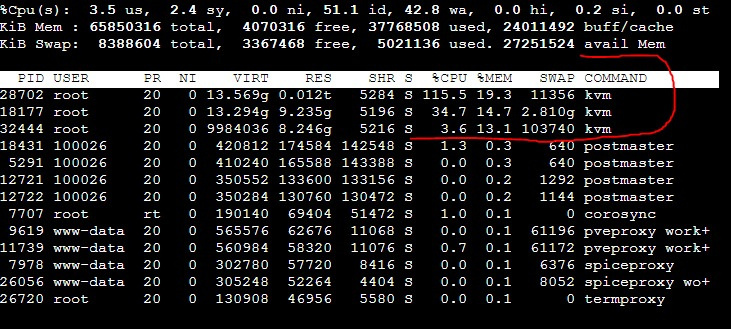Answer the question
In order to leave comments, you need to log in
High SWAP consumption in KVM operation?
Installed Proxmox Virtual Environment 5.2-1, FS ZFS
(Linux 4.15.17-1-pve #1 SMP PVE 4.15.17-9 (Wed, 9 May 2018 13:31:43 +0200))
RAM installed 62GB in operation approximately 50 %-60%
Pay attention to the high consumption of swap.
In the task manager, I saw a large consumption of SWAP by running vm processes. KVM (took 2GB)

Why does KVM use SWAP so much with free RAM?
How normal is this and what will happen with an increase in the number of cars (I'm afraid to see 100%)?
If it's not normal, how can I fix it?
Answer the question
In order to leave comments, you need to log in
activate zswap, 27 gigs of swap is not normal.
When you read about zswap. set up there.
“Swap consumption” should first of all be looked at not in gigabytes, but in operations per second, if you don’t have any monitoring, then you can use iostat -mxzp 10
If you have a lot of IOPS on a swap partition, then you need to do something, if no - rejoice, you have unused data settled there, you can say the memory was added for free (although for a noticeable effect, the size of the swap should be of the same order as the size of the memory, of course).
"A lot of IOPS" - how much? It can be considered as a percentage of disk performance, conditionally HDD can do 100 IOPS, so less than 10 swap accesses per second (less than 10% of disk capacity) will not have a significant impact on system performance. For SSD, the numbers will be much higher, and thousands of IOPS per swap can be normal there (but for desktop SSDs, you need to remember about disk resource / SLC cache clogging).
what will happen with an increase in the number of cars (I'm afraid to see 100%)?
Didn't find what you were looking for?
Ask your questionAsk a Question
731 491 924 answers to any question